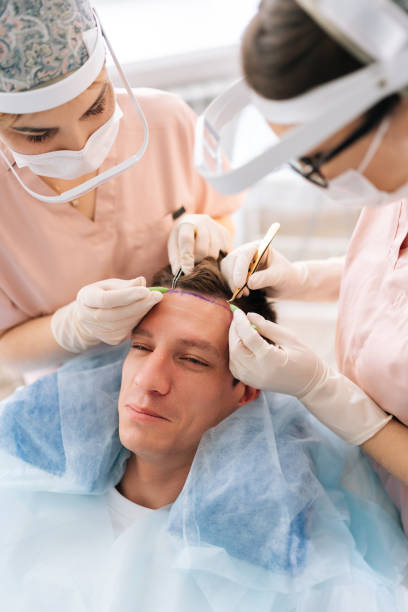
Undergoing a hair transplant in Dubai is just the beginning—recovery plays a major role in achieving optimal, natural-looking results. If you’re having your procedure in Dubai, it’s essential to understand how the city’s climate, lifestyle, and healthcare options affect healing. This article walks you through the recovery journey, what to expect at each stage, and how to speed up results while avoiding complications.
1. Day 1–3: Immediate Post-Surgery Phase
What Happens:
-
Mild swelling, redness, and tightness around the transplant site
-
Tiny scabs forming around grafts
-
Slight soreness on the donor area (typically the back of the head)
Tips:
-
Sleep with your head elevated (at a 45-degree angle) to reduce swelling
-
Avoid touching, scratching, or wetting the scalp
-
Use prescribed saline spray or mild antiseptics (as advised by your surgeon)
Dubai-Specific Advice:
-
Limit exposure to outdoor heat or sand—stay indoors and use air conditioning
-
Avoid driving if you’ve taken sedatives
2. Day 4–7: Healing and Scabbing Phase
What Happens:
-
Scabs may harden and fall off naturally
-
Redness starts to fade
-
Mild itching is common
Tips:
-
Start gentle scalp rinsing as per your surgeon’s directions
-
Use a pH-balanced shampoo (usually after Day 5)
-
Don’t remove scabs forcefully
Dubai-Specific Advice:
-
Wear a breathable, loose-fitting cap if you must go outside
-
Avoid saunas, hot showers, and gyms (sweating can irritate follicles)
3. Week 2–4: Shedding Phase (Shock Loss)
What Happens:
-
Transplanted hair begins to fall out (this is normal)
-
Hair follicles enter resting phase before regrowth
Tips:
-
Do not panic—this is part of the natural cycle
-
Stay on schedule with follow-up appointments and PRP sessions if recommended
Dubai-Specific Advice:
-
Avoid heavy sun exposure—even mild UV can dry the scalp
-
Wear SPF spray for the scalp or use an umbrella if outdoors
4. Months 1–3: Dormant Phase
What Happens:
-
Minimal visible changes
-
Hair follicles remain under the surface
-
Some patients experience minor acne-like bumps (folliculitis)
Tips:
-
Maintain a healthy diet rich in protein, iron, and B vitamins
-
Take doctor-prescribed biotin, minoxidil, or finasteride as needed
Dubai-Specific Advice:
-
Stay hydrated—dehydration in dry climates can slow healing
-
Consider scalp cooling therapies if recommended by your clinic
5. Months 4–6: Visible Growth Begins
What Happens:
-
Soft, thin “baby” hairs emerge
-
Hair becomes denser with time
-
Texture may appear wiry or curly initially
Tips:
-
Resume normal shampooing and gentle brushing
-
You can now get haircuts (scissor only, no clippers yet)
Dubai-Specific Advice:
-
Get a hydrating scalp treatment at a reputable clinic to stimulate healthy growth
6. Months 7–12: Final Results Taking Shape
What Happens:
-
Full thickness and density develop
-
Hair texture normalizes
-
Hairline becomes natural and blends with original hair
Tips:
-
Regular PRP therapy can enhance final results
-
Follow up with your surgeon for final evaluation
Dubai-Specific Advice:
-
Book a post-transplant care package with your clinic (many in Dubai offer it)
-
Plan a professional photoshoot—many patients regain confidence by month 10–12!
Bonus: Hair Transplant Recovery Do’s and Don’ts in Dubai
Do:
-
Follow your surgeon’s aftercare routine strictly
-
Protect your scalp from Dubai’s intense sun and dry winds
-
Eat clean and stay well-hydrated
Don’t:
-
Swim in the sea or chlorinated pools for 1 month
-
Smoke or consume alcohol (delays healing)
-
Resume high-intensity workouts too soon